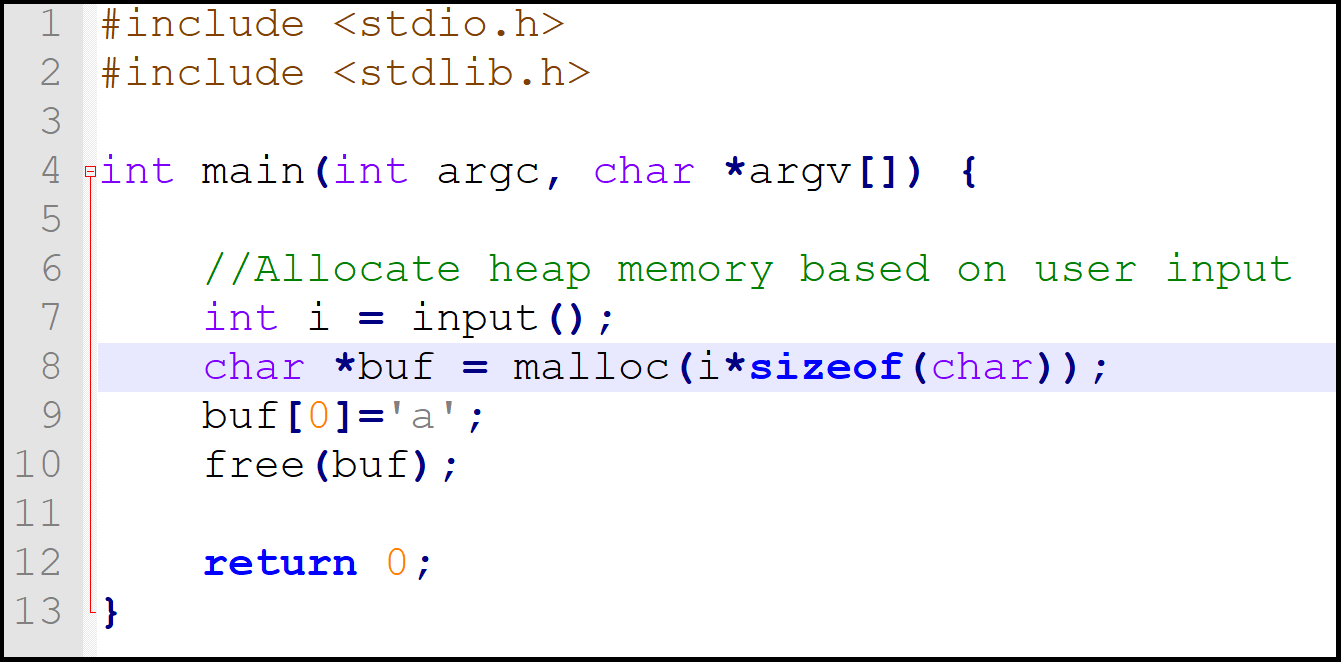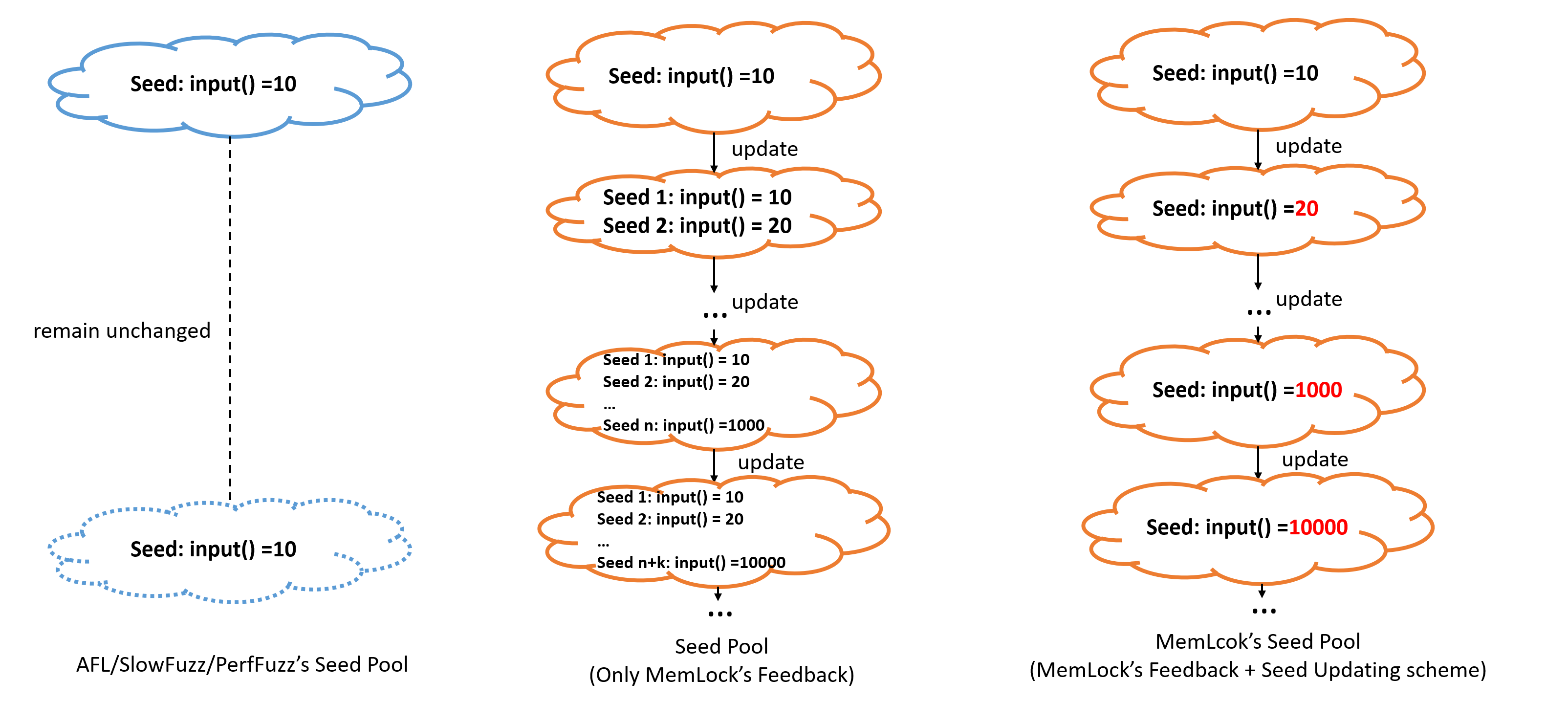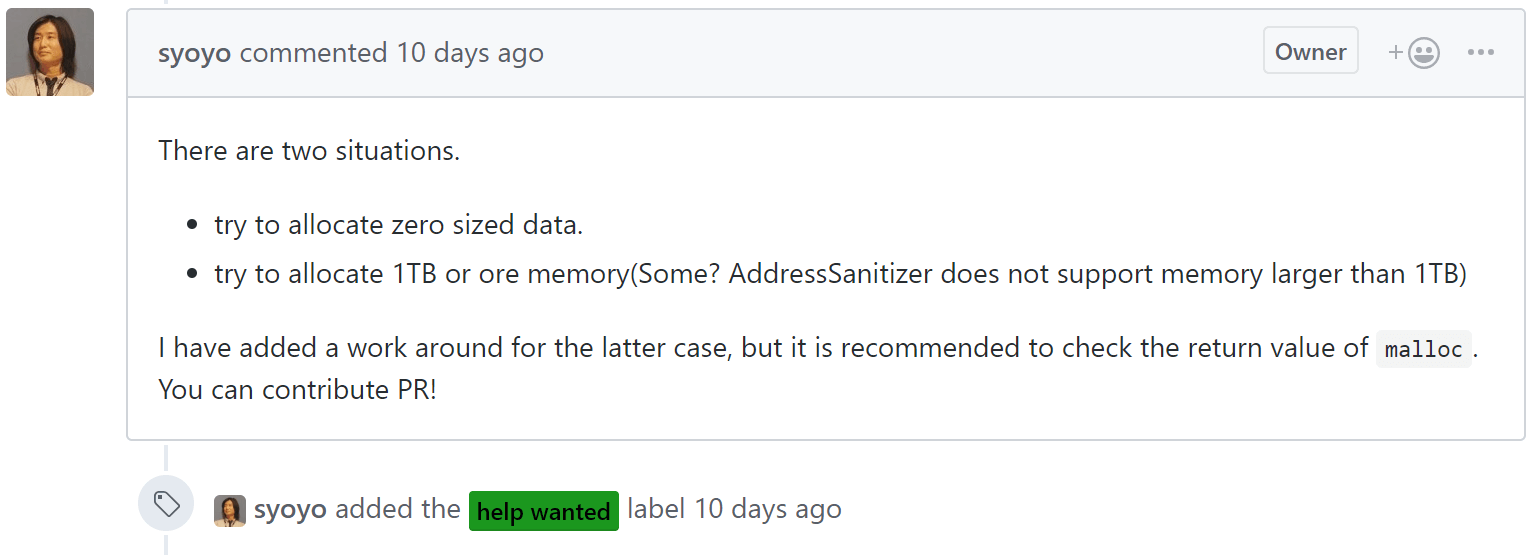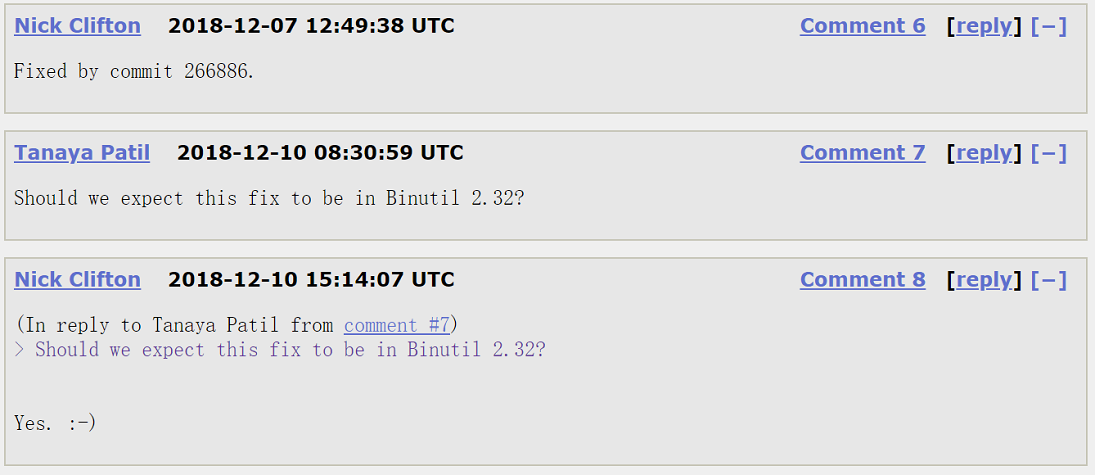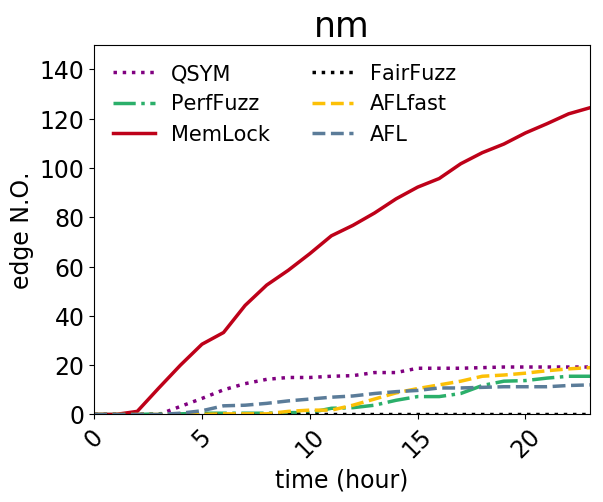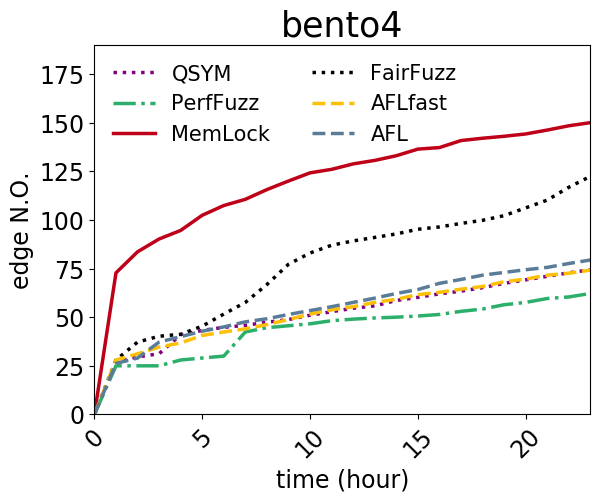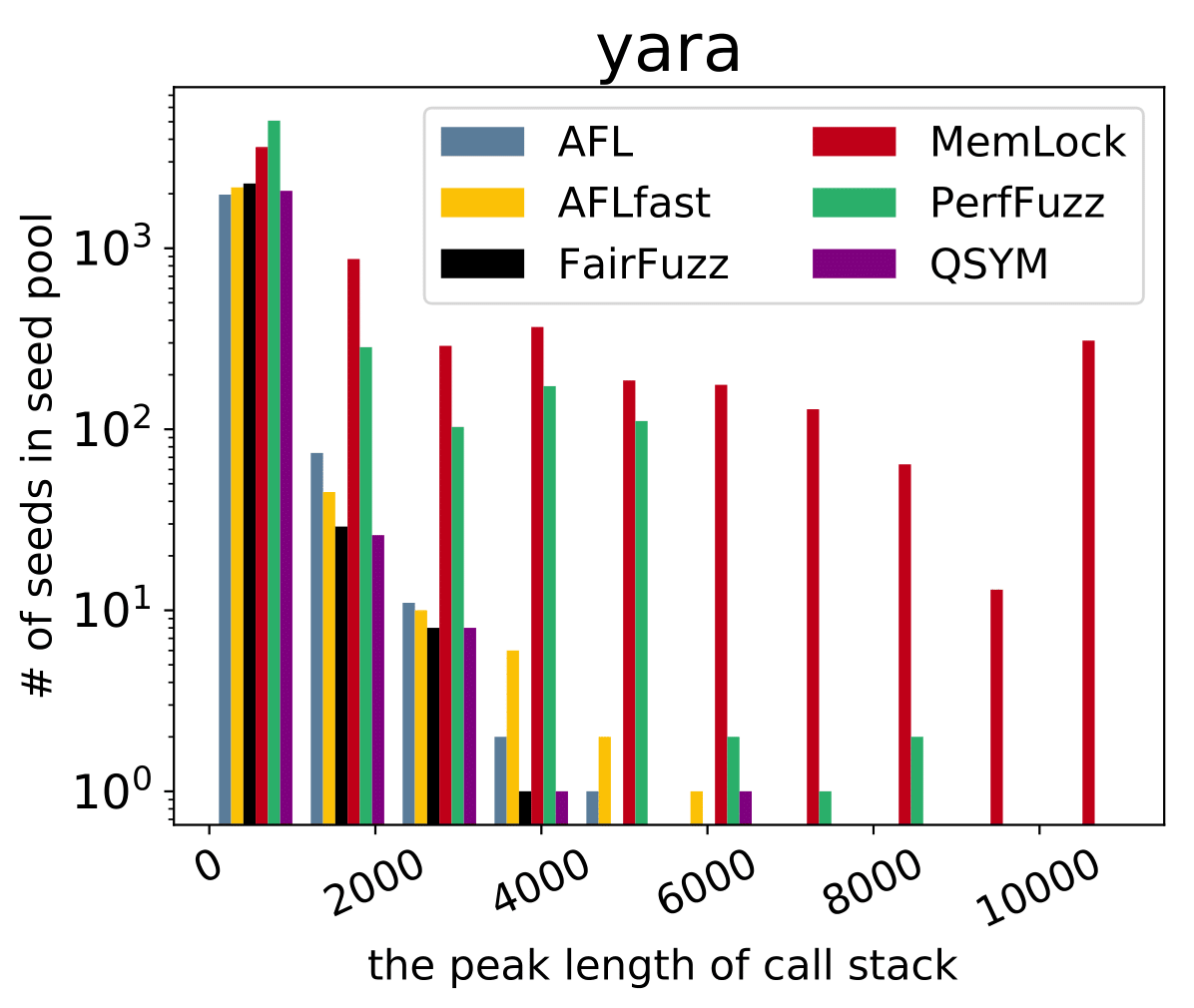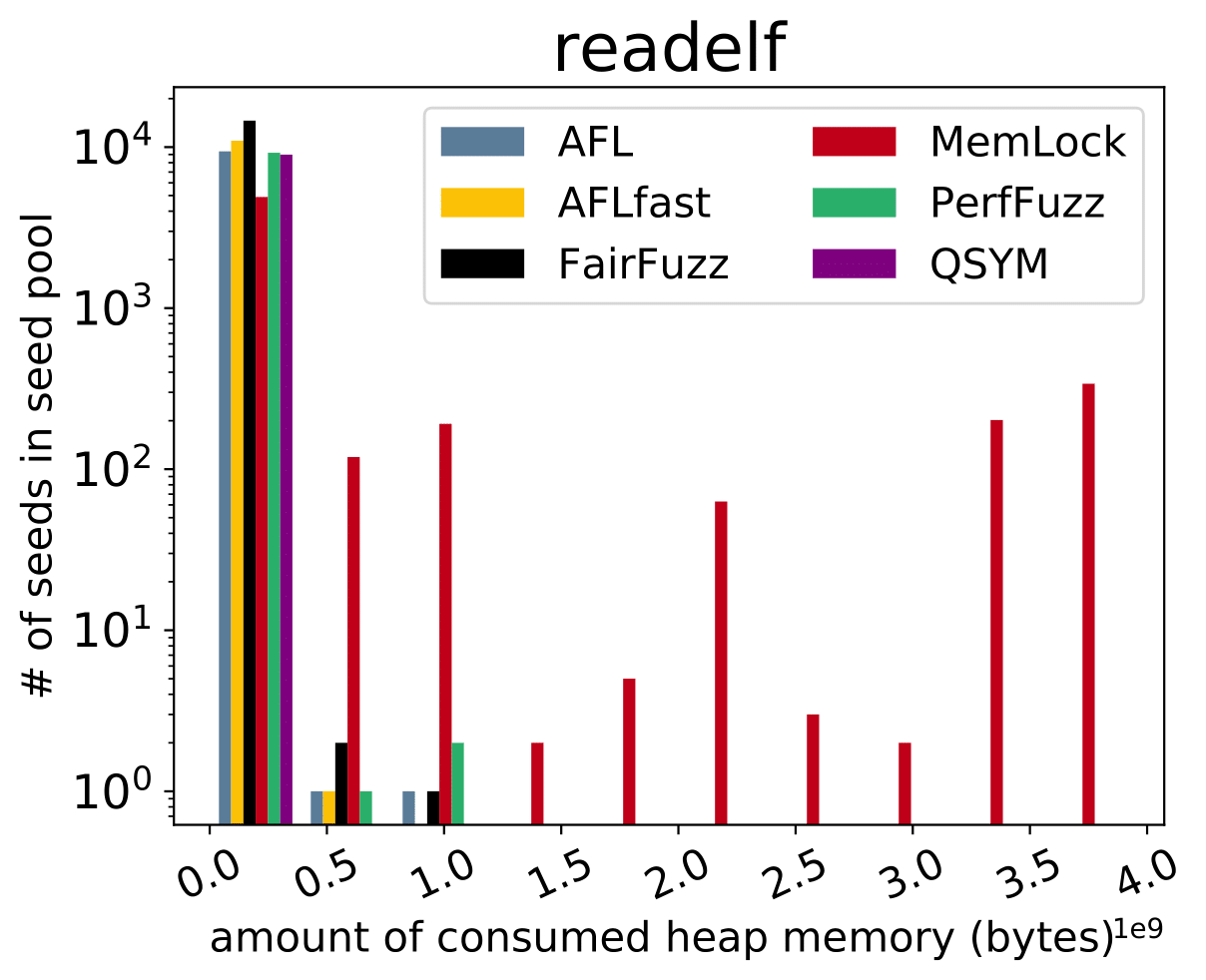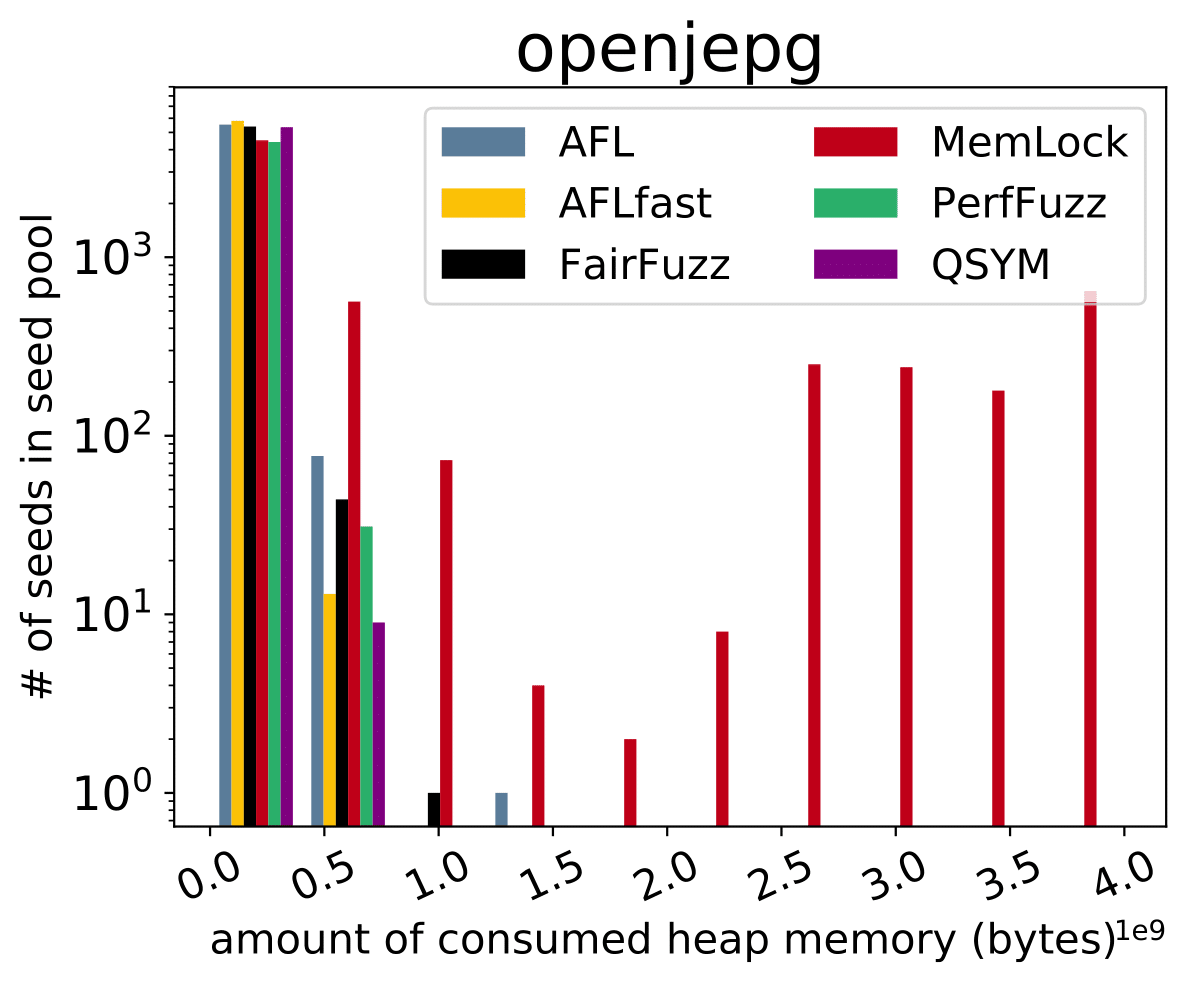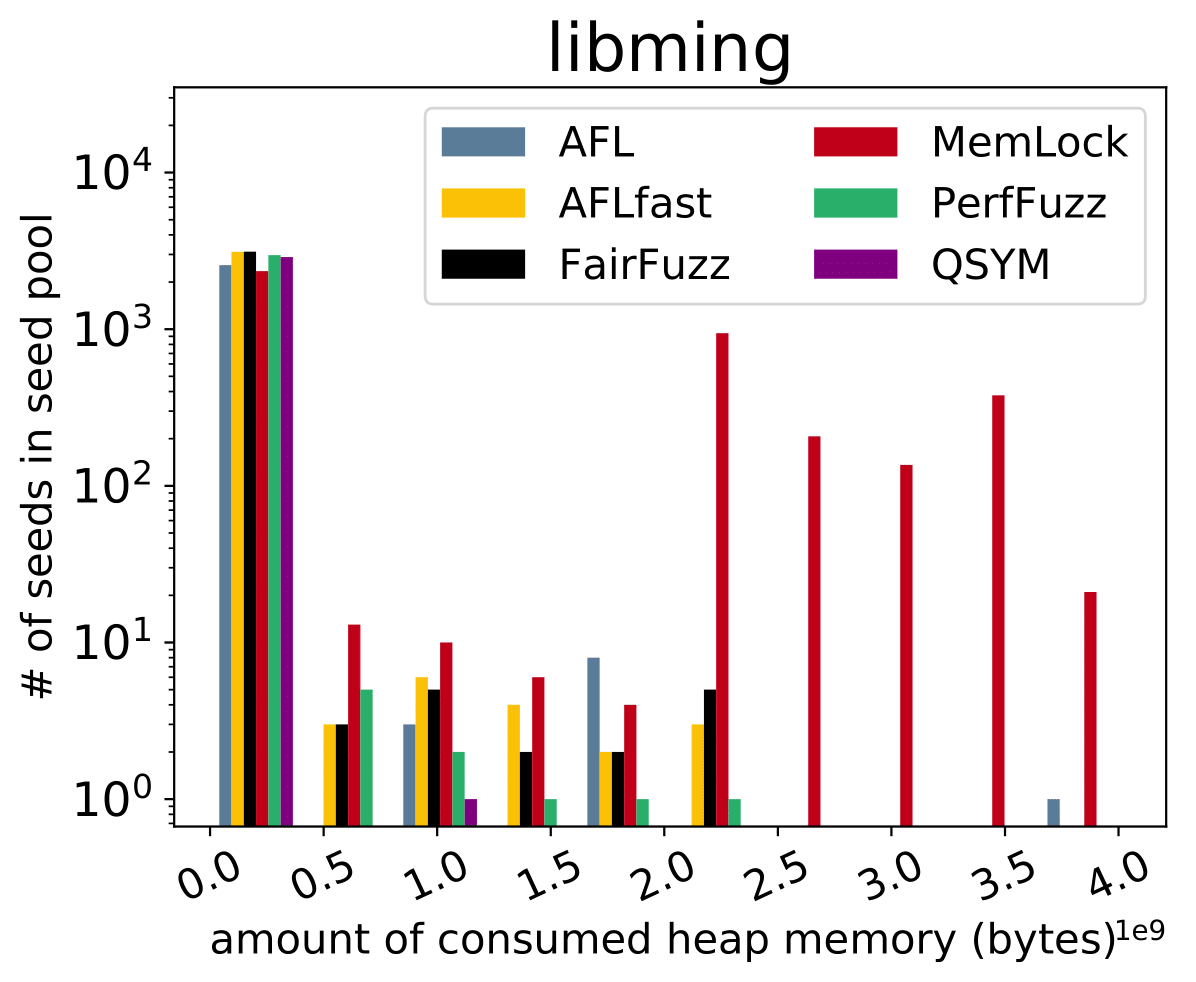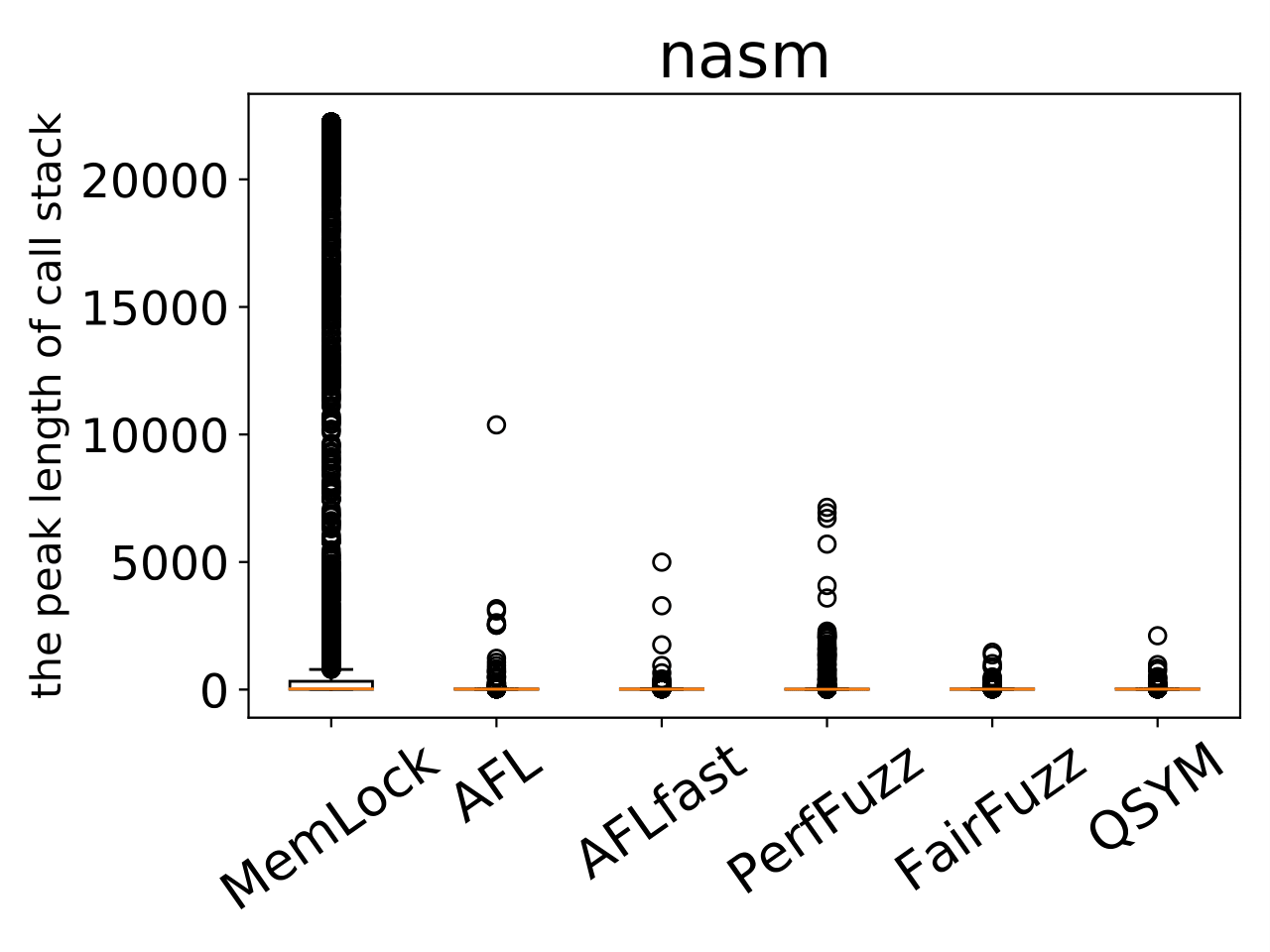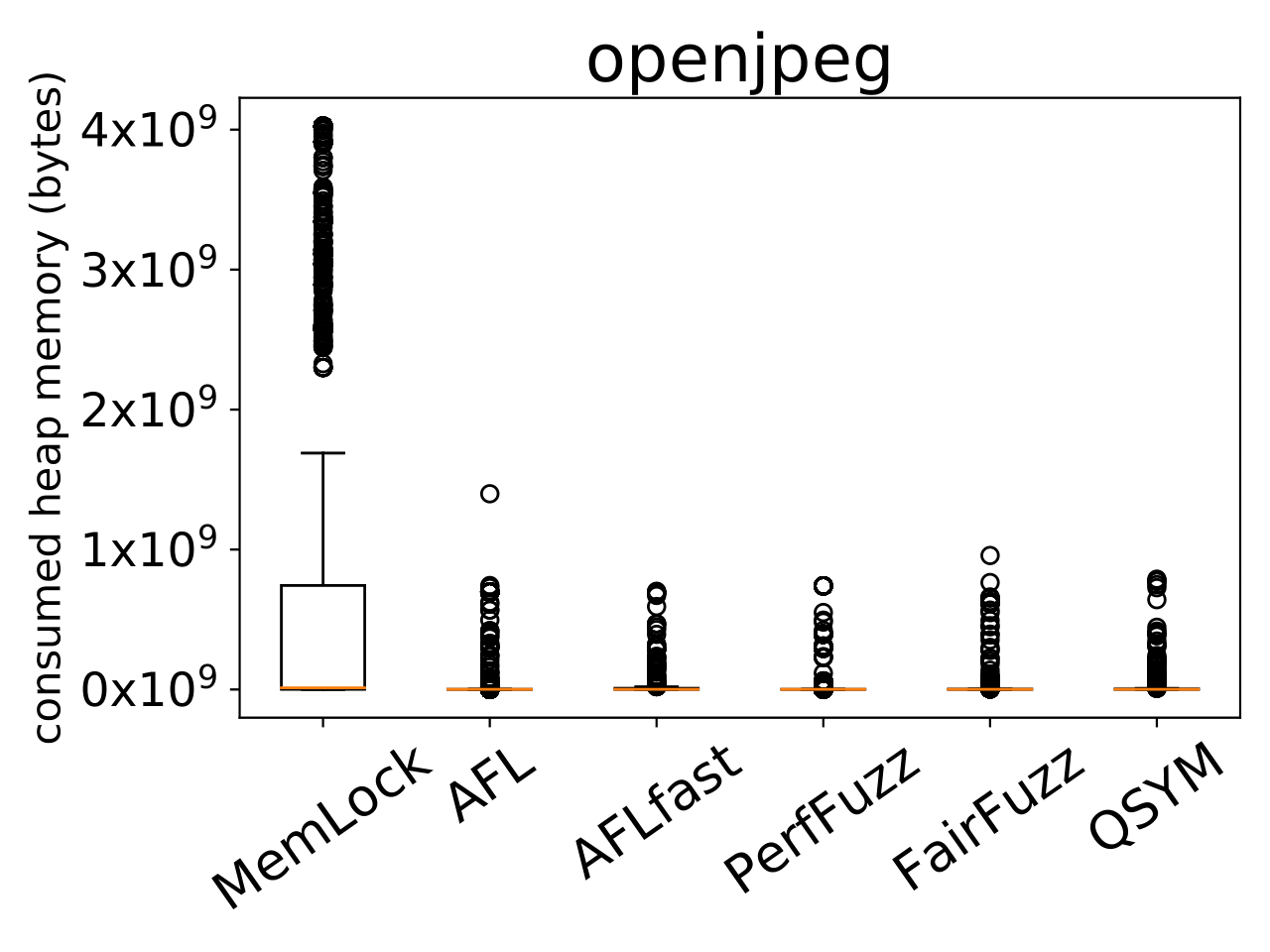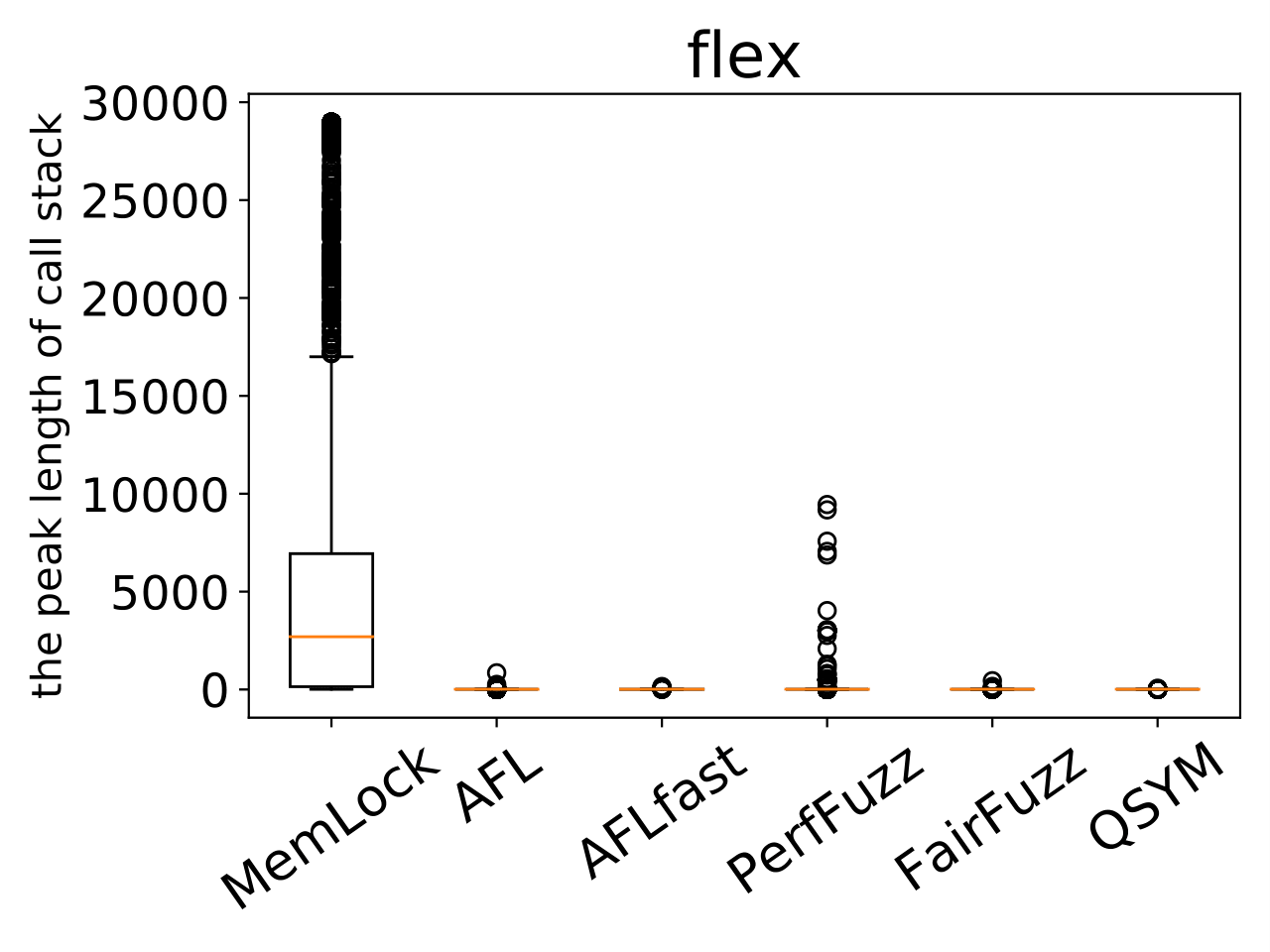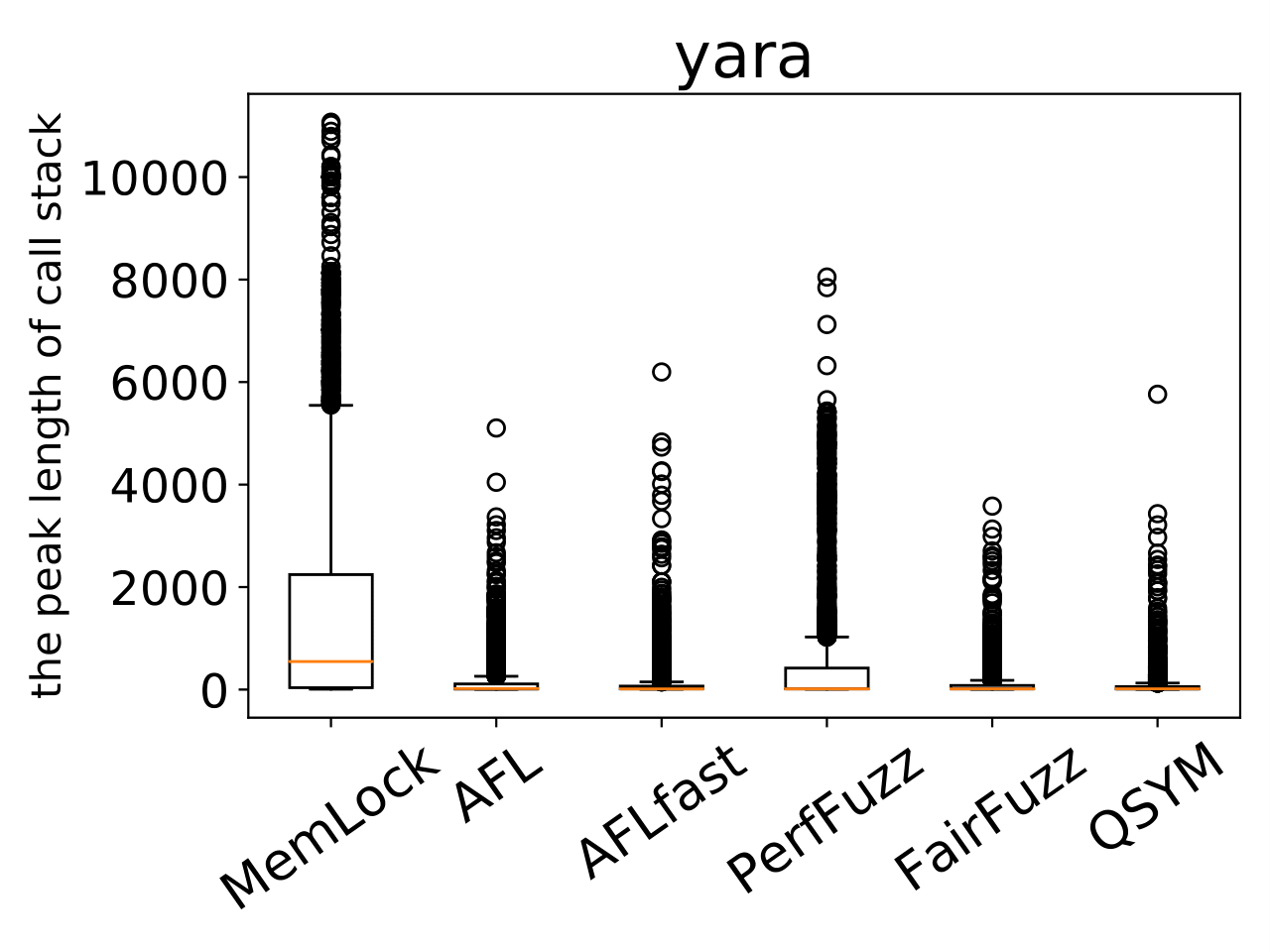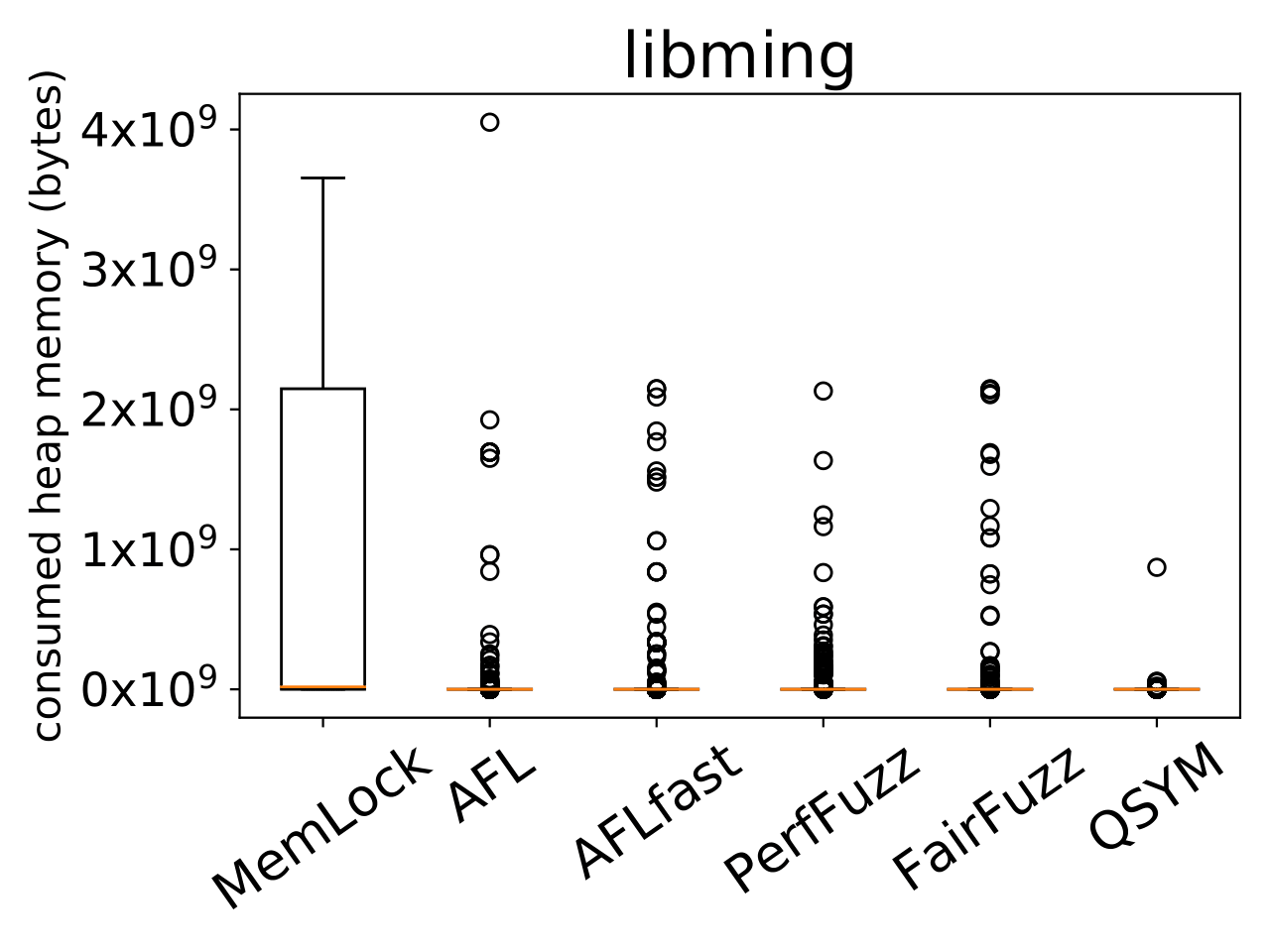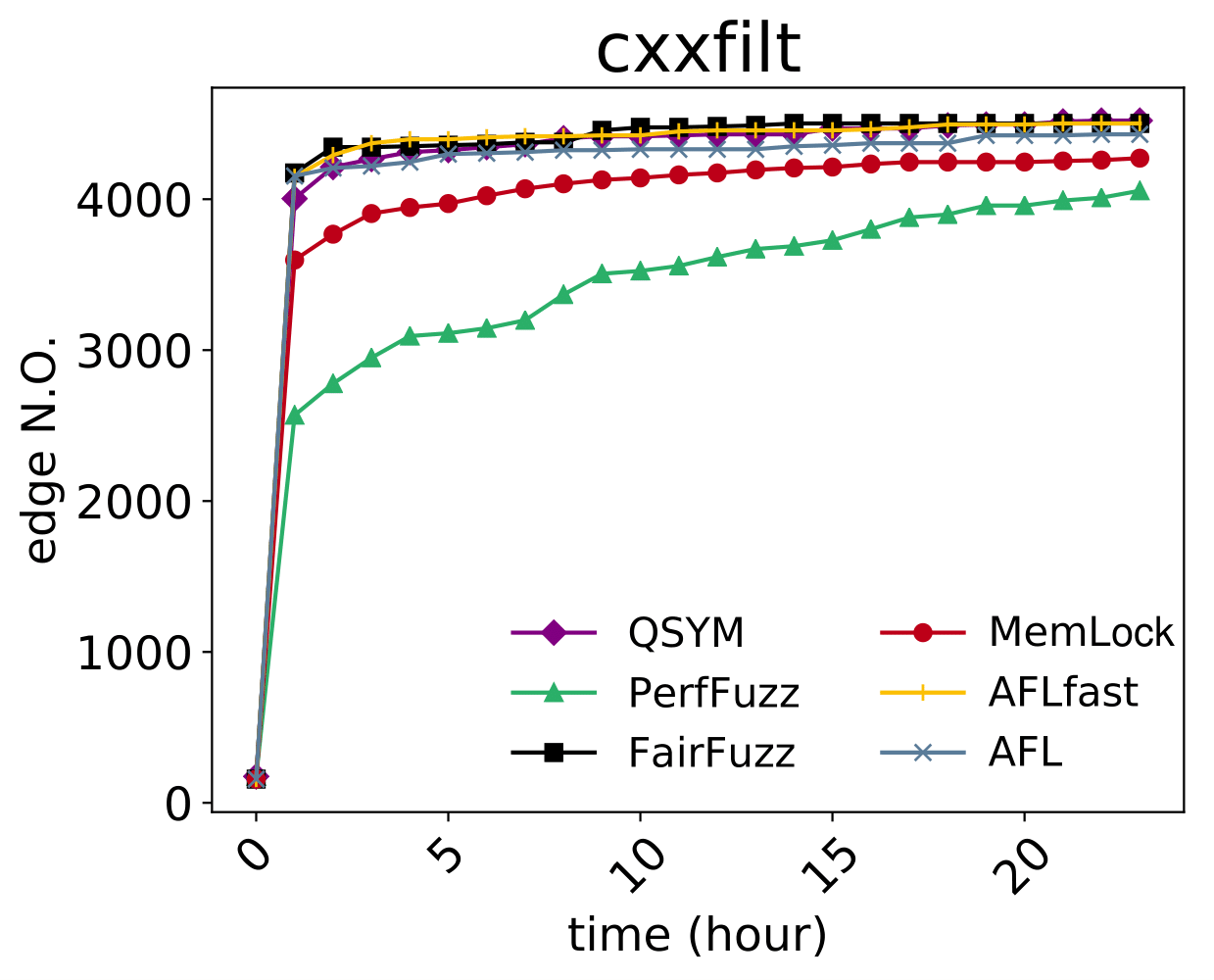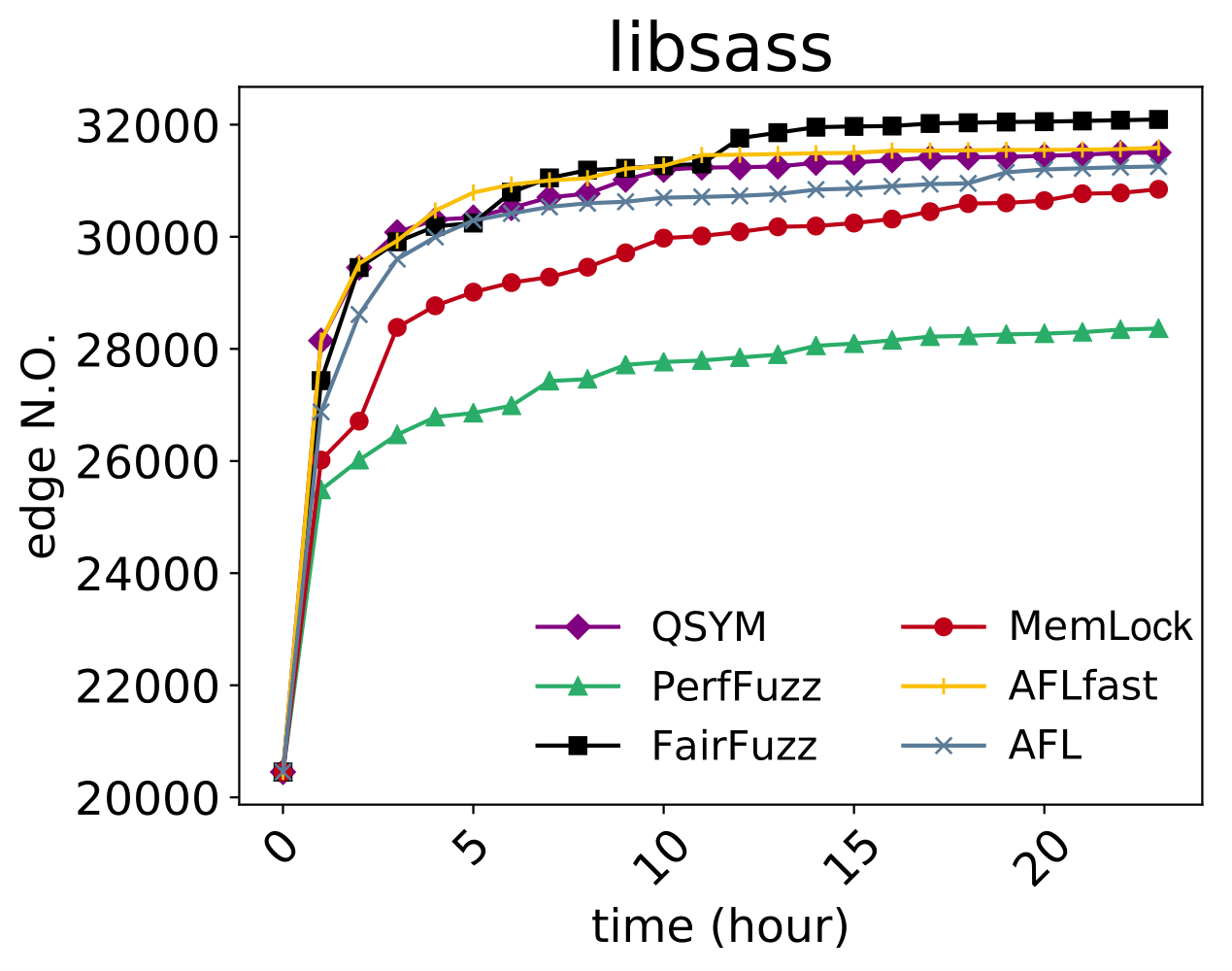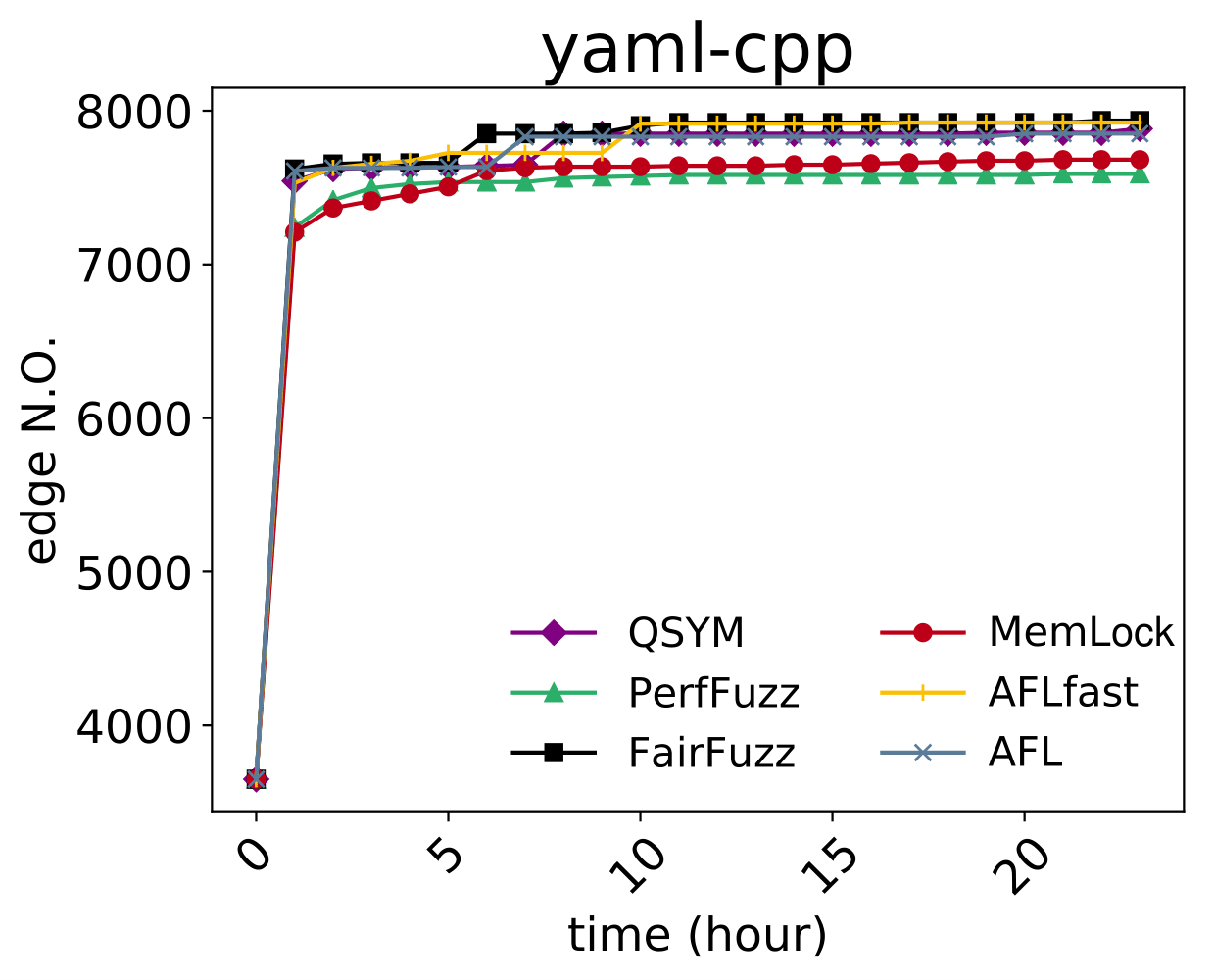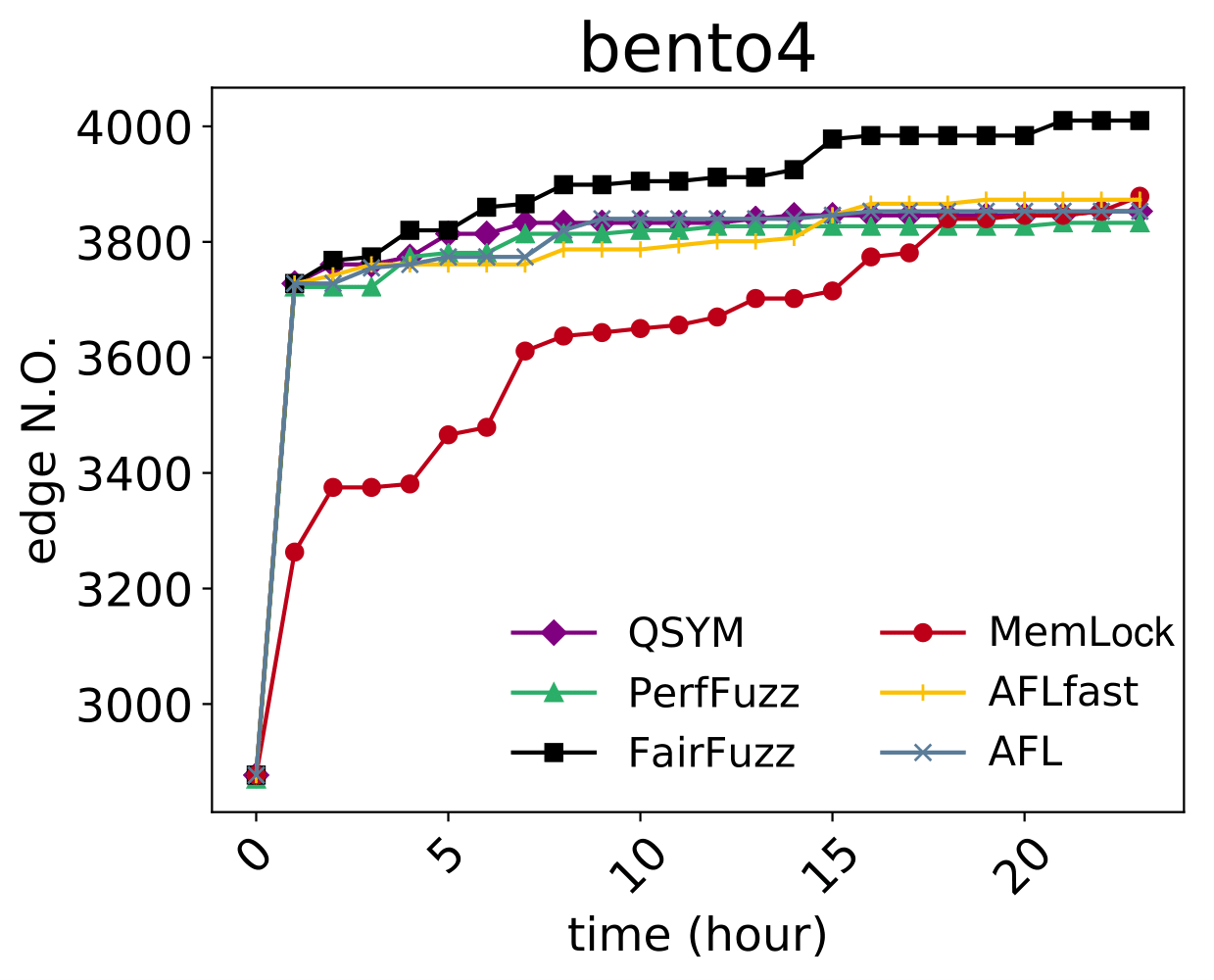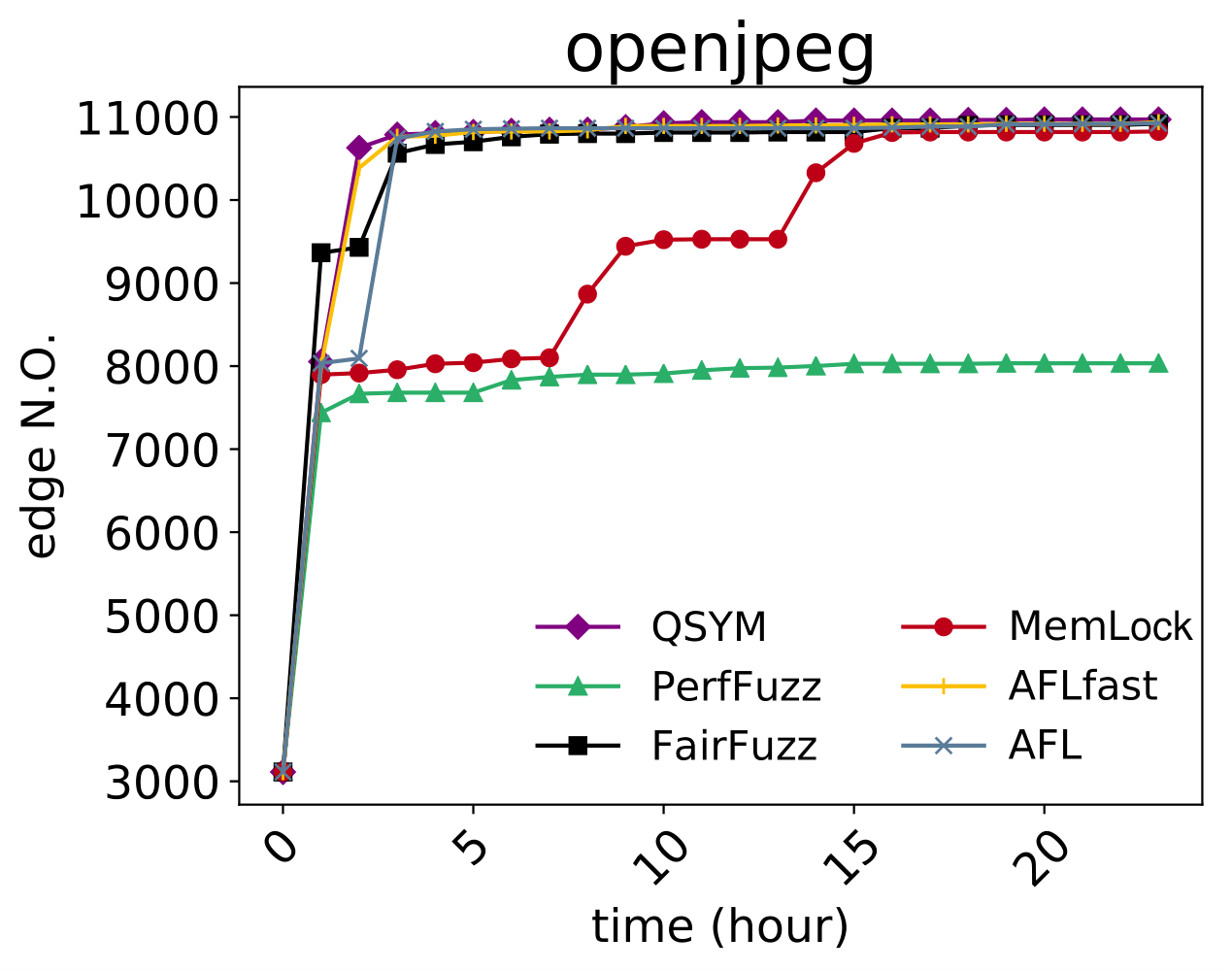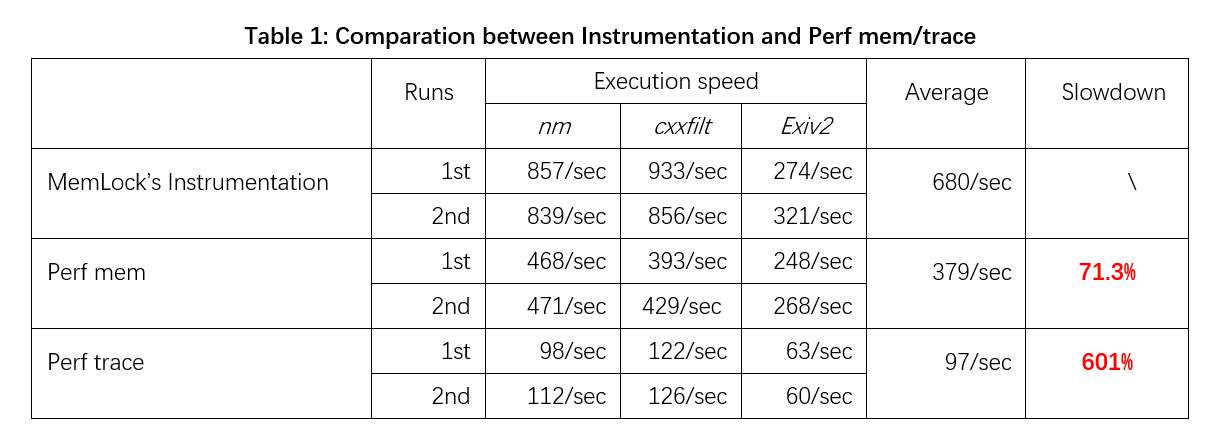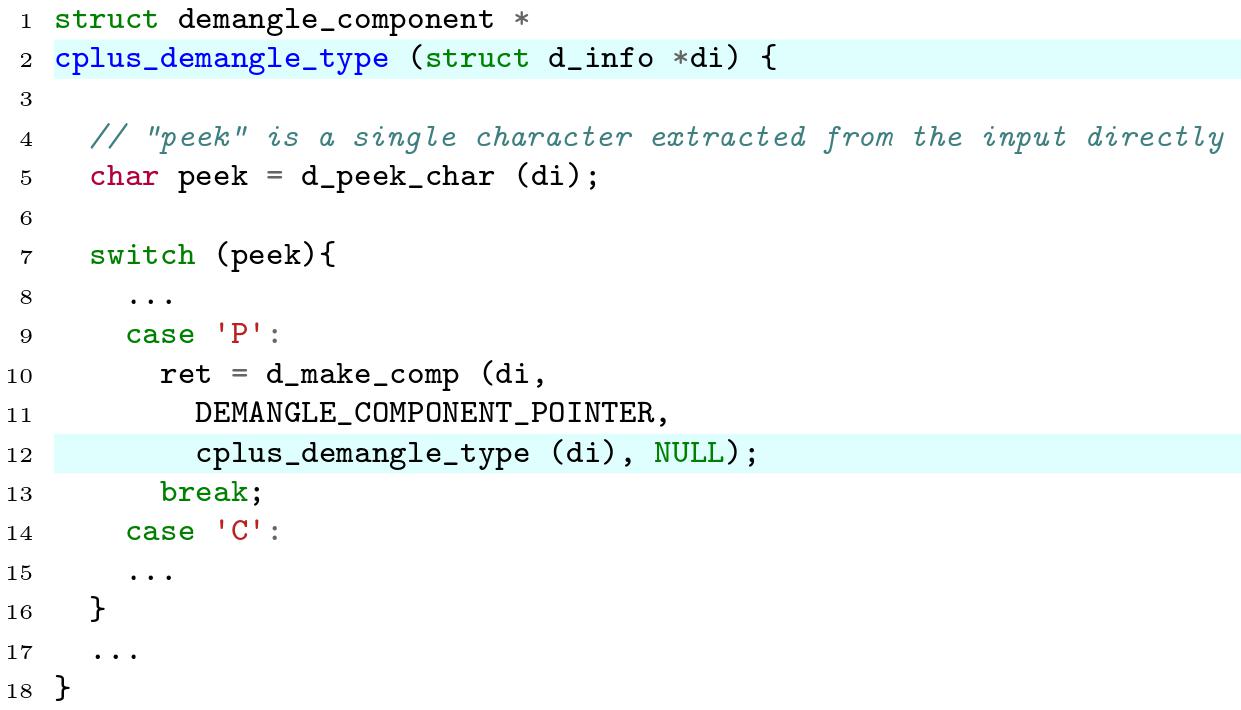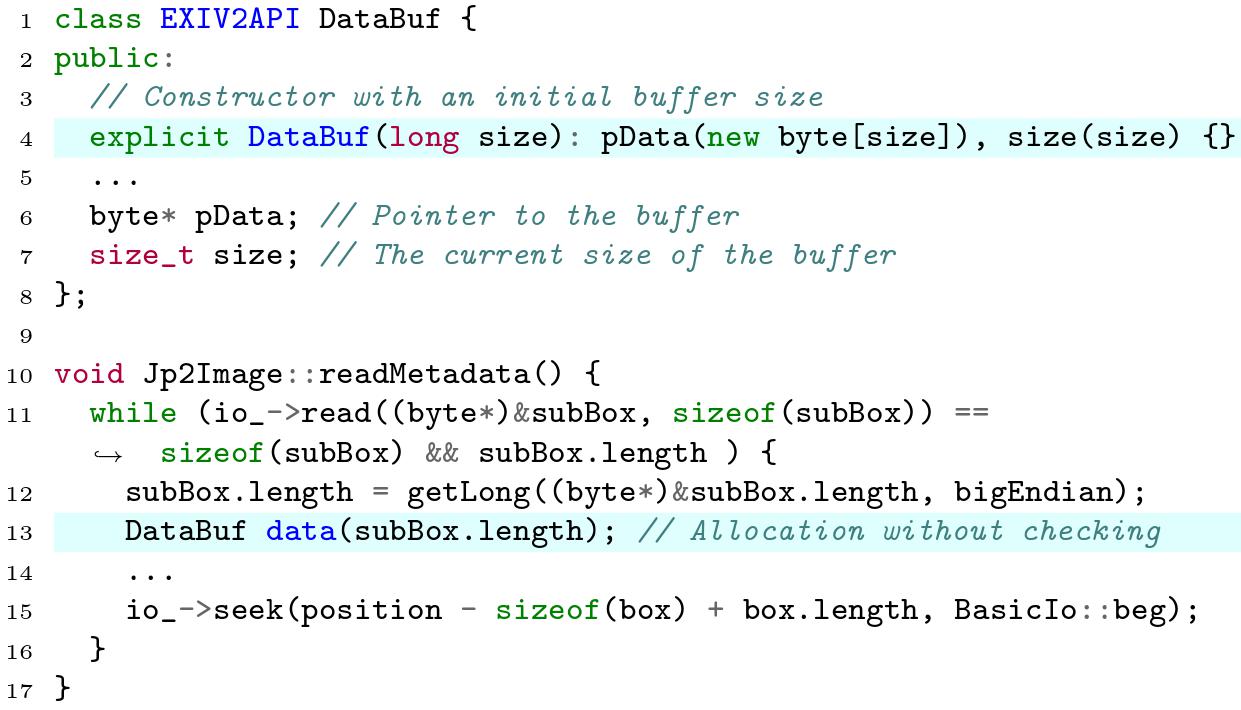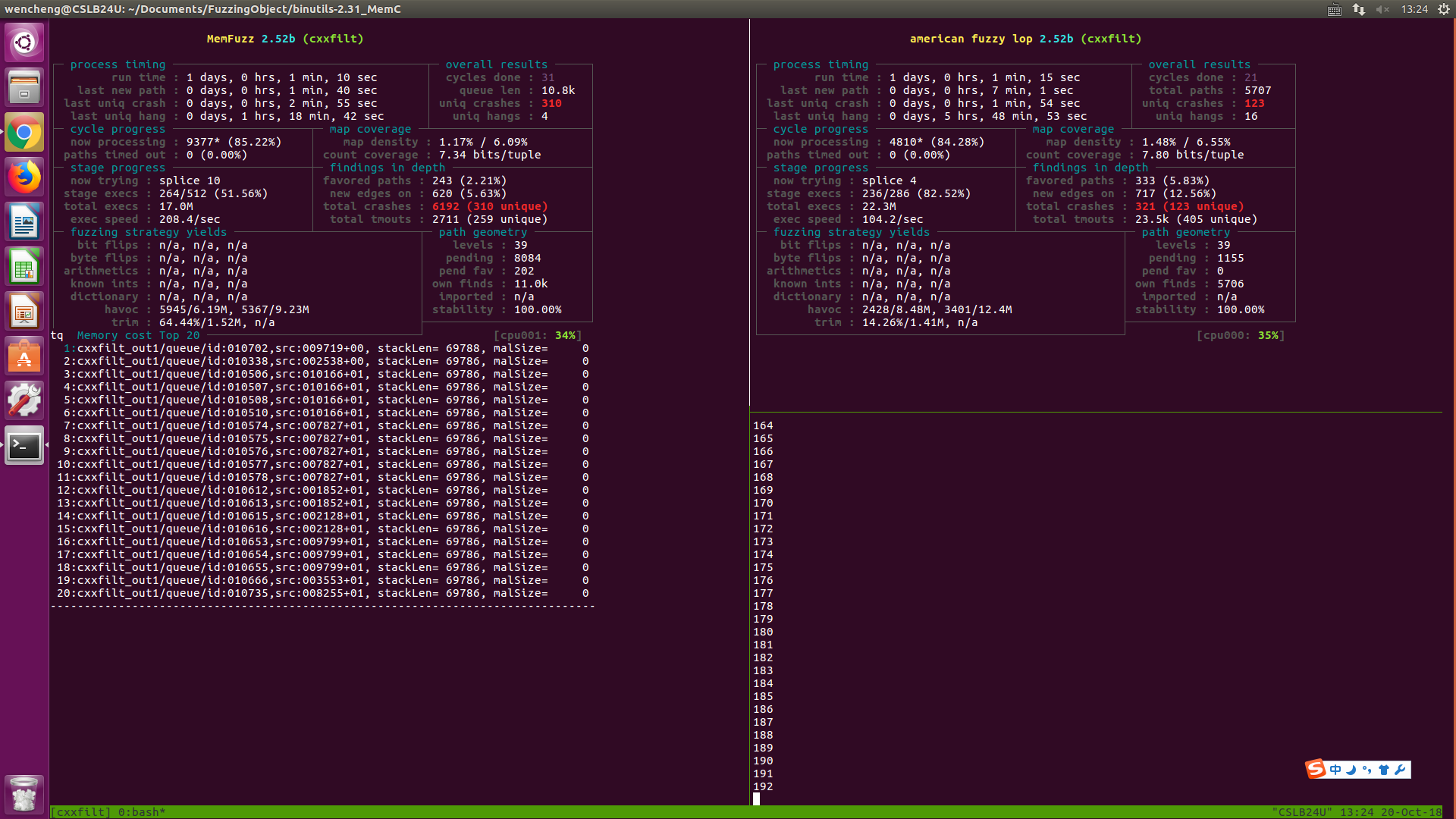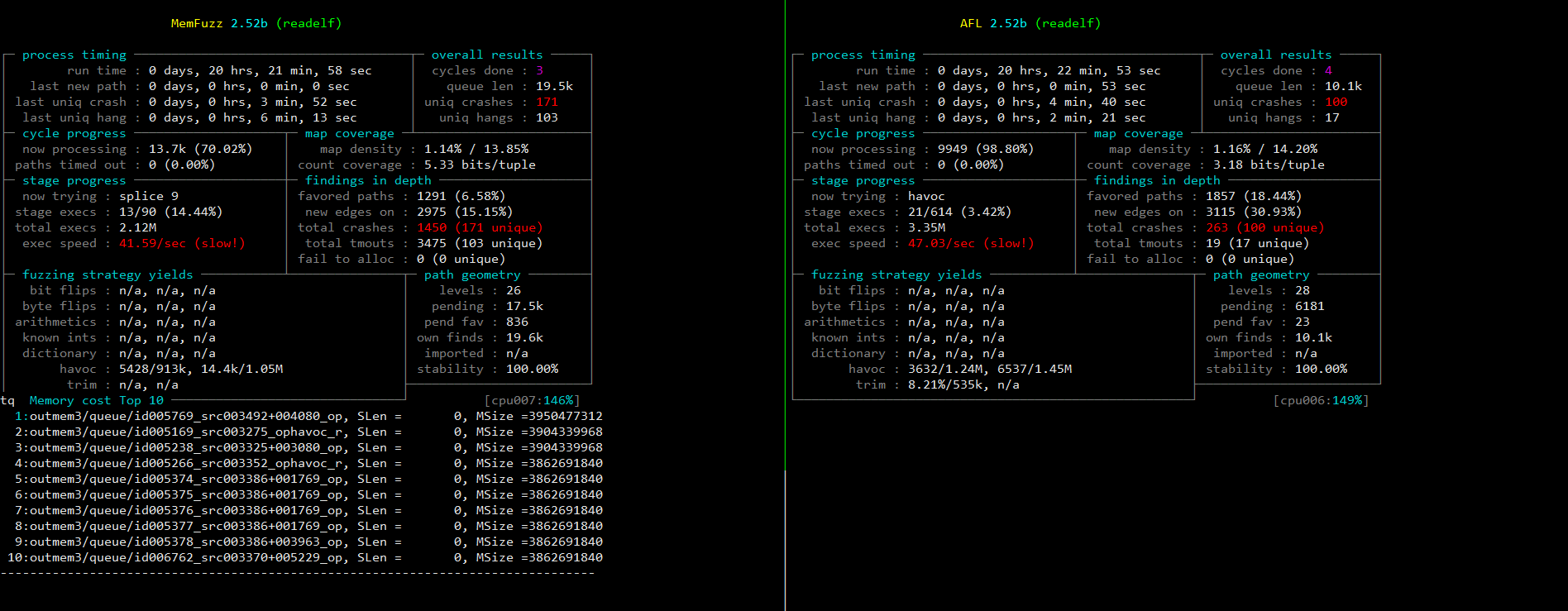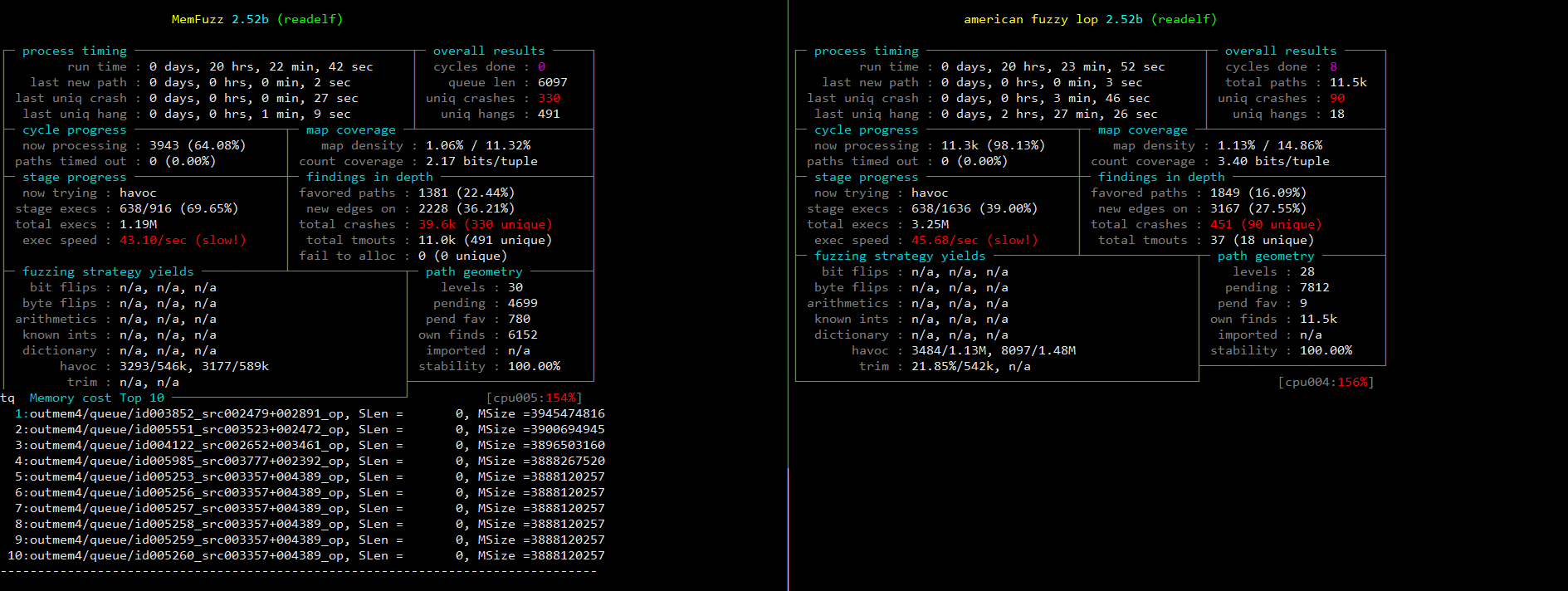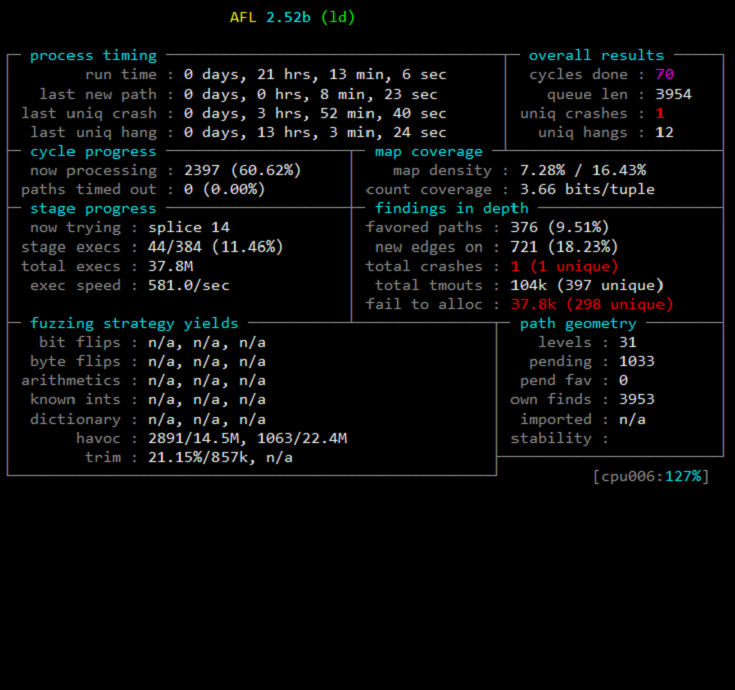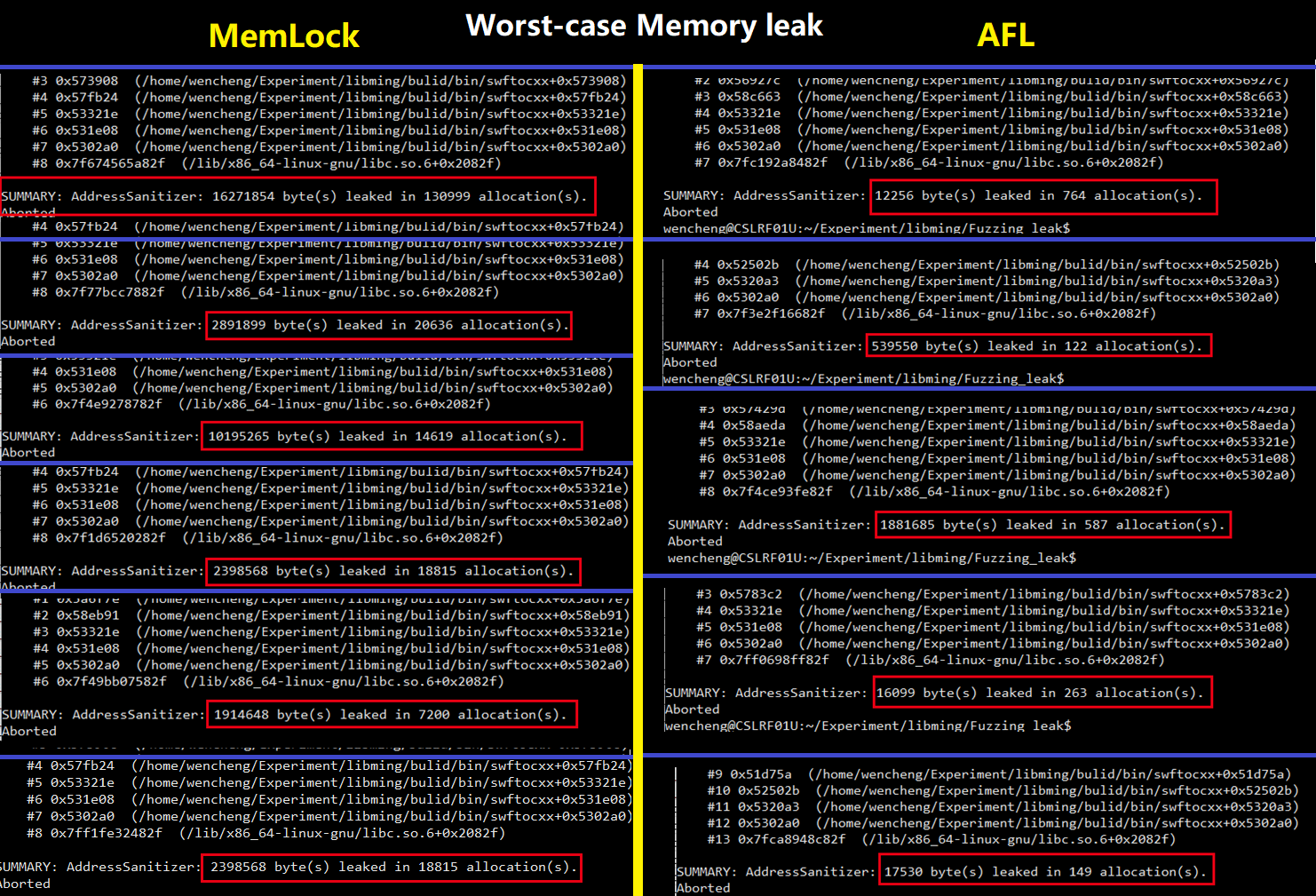| CVE-2019-6293 |
CWE-674: Uncontrolled Recursion |
An issue was discovered in the function mark_beginning_as_normal in nfa.c in flex 2.6.4. There is a stack exhaustion problem caused by the mark_beginning_as_normal function making recursive calls to itself in certain scenarios involving lots of '*' characters. Remote attackers could leverage this vulnerability to cause a denial-of-service. |
| CVE-2019-6292 |
CWE-674: Uncontrolled Recursion |
An issue was discovered in singledocparser.cpp in yaml-cpp (aka LibYaml-C++) 0.6.2. Stack Exhaustion occurs in YAML::SingleDocParser, and there is a stack consumption problem caused by recursive stack frames: HandleCompactMap, HandleMap, HandleFlowSequence, HandleSequence, HandleNode. Remote attackers could leverage this vulnerability to cause a denial-of-service via a cpp file. |
| CVE-2019-6291 |
CWE-674: Uncontrolled Recursion |
An issue was discovered in the function expr6 in eval.c in Netwide Assembler (NASM) through 2.14.02. There is a stack exhaustion problem caused by the expr6 function making recursive calls to itself in certain scenarios involving lots of '!' or '+' or '-' characters. Remote attackers could leverage this vulnerability to cause a denial-of-service via a crafted asm file. |
| CVE-2019-6290 |
CWE-674: Uncontrolled Recursion |
An infinite recursion issue was discovered in eval.c in Netwide Assembler (NASM) through 2.14.02. There is a stack exhaustion problem resulting from infinite recursion in the functions expr, rexp, bexpr and cexpr in certain scenarios involving lots of '{' characters. Remote attackers could leverage this vulnerability to cause a denial-of-service via a crafted asm file. |
| CVE-2018-18701 |
CWE-674: Uncontrolled Recursion |
An issue was discovered in cp-demangle.c in GNU libiberty, as distributed in GNU Binutils 2.31. There is a stack consumption vulnerability resulting from infinite recursion in the functions next_is_type_qual() and cplus_demangle_type() in cp-demangle.c. Remote attackers could leverage this vulnerability to cause a denial-of-service via an ELF file, as demonstrated by nm. |
| CVE-2018-18700 |
CWE-674: Uncontrolled Recursion |
An issue was discovered in cp-demangle.c in GNU libiberty, as distributed in GNU Binutils 2.31. There is a stack consumption vulnerability resulting from infinite recursion in the functions d_name(), d_encoding(), and d_local_name() in cp-demangle.c. Remote attackers could leverage this vulnerability to cause a denial-of-service via an ELF file, as demonstrated by nm. |
| CVE-2018-18484 |
CWE-674: Uncontrolled Recursion |
An issue was discovered in cp-demangle.c in GNU libiberty, as distributed in GNU Binutils 2.31. Stack Exhaustion occurs in the C++ demangling functions provided by libiberty, and there is a stack consumption problem caused by recursive stack frames: cplus_demangle_type, d_bare_function_type, d_function_type. |
| CVE-2018-17985 |
CWE-674: Uncontrolled Recursion |
An issue was discovered in cp-demangle.c in GNU libiberty, as distributed in GNU Binutils 2.31. There is a stack consumption problem caused by the cplus_demangle_type function making recursive calls to itself in certain scenarios involving many 'P' characters. |
| CVE-2019-7704 |
CWE-789: Uncontrolled Memory Allocation |
wasm::WasmBinaryBuilder::readUserSection in wasm-binary.cpp in Binaryen 1.38.22 triggers an attempt at excessive memory allocation, as demonstrated by wasm-merge and wasm-opt. |
| CVE-2019-7698 |
CWE-789: Uncontrolled Memory Allocation |
An issue was discovered in AP4_Array::EnsureCapacity in Core/Ap4Array.h in Bento4 1.5.1-627. Crafted MP4 input triggers an attempt at excessive memory allocation, as demonstrated by mp42hls, a related issue to CVE-2018-20095. |
| CVE-2019-7148 |
CWE-789: Uncontrolled Memory Allocation |
An attempted excessive memory allocation was discovered in the function read_long_names in elf_begin.c in libelf in elfutils 0.174. Remote attackers could leverage this vulnerability to cause a denial-of-service via crafted elf input, which leads to an out-of-memory exception. NOTE: The maintainers believe this is not a real issue, but instead a "warning caused by ASAN because the allocation is big. By setting ASAN_OPTIONS=allocator_may_return_null=1 and running the reproducer, nothing happens." |
| CVE-2018-20652 |
CWE-789: Uncontrolled Memory Allocation |
An attempted excessive memory allocation was discovered in the function tinyexr::AllocateImage in tinyexr.h in tinyexr v0.9.5. Remote attackers could leverage this vulnerability to cause a denial-of-service via crafted input, which leads to an out-of-memory exception. |
| CVE-2018-18483 |
CWE-789: Uncontrolled Memory Allocation |
The get_count function in cplus-dem.c in GNU libiberty, as distributed in GNU Binutils 2.31, allows remote attackers to cause a denial of service (malloc called with the result of an integer-overflowing calculation) or possibly have unspecified other impact via a crafted string, as demonstrated by c++filt. |
| CVE-2018-20657 |
CWE-401: Memory Leak |
The demangle_template function in cplus-dem.c in GNU libiberty, as distributed in GNU Binutils 2.31.1, has a memory leak via a crafted string, leading to a denial of service (memory consumption), as demonstrated by cxxfilt, a related issue to CVE-2018-12698. |
| CVE-2018-20002 |
CWE-401: Memory Leak |
The _bfd_generic_read_minisymbols function in syms.c in the Binary File Descriptor (BFD) library (aka libbfd), as distributed in GNU Binutils 2.31, has a memory leak via a crafted ELF file, leading to a denial of service (memory consumption), as demonstrated by nm. |



